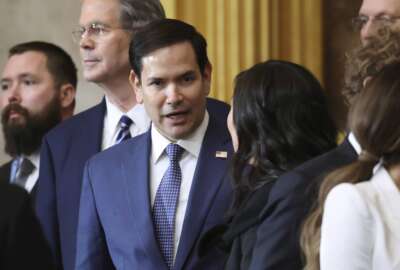Postal Service needs some transformation pain now to avoid desperation later
Commentary: In-Depth host Francis Rose says getting the Postal Service on solid ground needs both a long-term and short-term plan that may mean making significant...
$1.5 billion. Let that sink in for a minute. That’s how much money the Postal Service lost in just the first three months of 2015. Enough to fund the Internal Revenue Service for more than one entire month. Poof! Gone. 
- What exactly does America need the Postal Service to do in 25 years, that no one else will be able to do? Even five years ago, one might have suggested the “last mile” service was one such function. But drone technology may make even that service element obsolete. That’s why the stakeholders should include customers and companies whose businesses are built on delivering items to homes, such as Sen. Tom Carper’s (D-Del.) roundtable discussion Tuesday.Right now this part of the discussion seems to focus on how many days the mail gets delivered. That’s wrong. The right place to start is: “What service can the Postal Service provide?” Only when you know that, can you then determine how the customer expects that service to be rendered. The solution for the next decade or 15 years may look dramatically different than the ideas we have today. And that’s OK. “We’ve always done it that way” is less and less an excuse in other parts of the government, and it shouldn’t be an excuse at USPS either.
- Who does the Postal Service need to do that work? It may be that some of the skills the Postal Service needs to execute its mission for 2030 are not available in its workforce of today. It may be that some of those skills don’t exist yet. But a plan to let the Postal Service build that workforce needs to give USPS the flexibility to create skill areas that it has not historically had, and may not have even been created yet.This is another area where all the stakeholders will need a voice. But everyone will also have to be realistic; there may be many people who will need to do jobs they haven’t historically done, and there may be many people who are no longer with the Postal Service.
- How will we compensate and develop the people we need to do that work? Once USPS knows what it needs people to do, and determines what people it needs, then — and only then — should the process of figuring out what their pay and benefits package should look like. And it’s absolutely vital that USPS devises a career development plan for the new workforce it will build. A failure to do that will yield a workforce that’s very highly skilled at doing things the agency needs less of, not unlike where it is today.
Notice this is the third step of the process, yet this is where the bulk of the discussion is happening right now. Certainly, the retiree health benefit prepayment problem is huge, and should be part of the discussion. But if it turns out a restructuring of the compensation package is in order, the way that prepayment is made, and the amount of it, may be dramatically different than today, and all of the debate happening today may be wasted breath. That $1.5 billion sucking sound is going to be hard to ignore. Instinctually, the response will be to triage the losses. But mistakes the Postal Service and Congress make by not addressing the three issues detailed here could wind up costing much, much more than the billions the Postal Service is losing today. Those mistakes could wind up costing citizens the service of the USPS they will need in 2030 and beyond, and that loss won’t be measured only in dollars.
Francis Rose is host of Federal News Radio’s In Depth radio show, which airs weekdays from 4-7 p.m. MORE COMMENTARY FROM FRANCIS ROSE: Time is right for a civilian employee compensation commission New Congress ‘worst places to work’ hotline: right idea, wrong question FY2016 budget: put up or shut up time for Congress After Denver hospital debacle, VA should leave building to the pros 3 reasons why new SES reform panel can succeed where others have not
Copyright © 2025 Federal News Network. All rights reserved. This website is not intended for users located within the European Economic Area.





